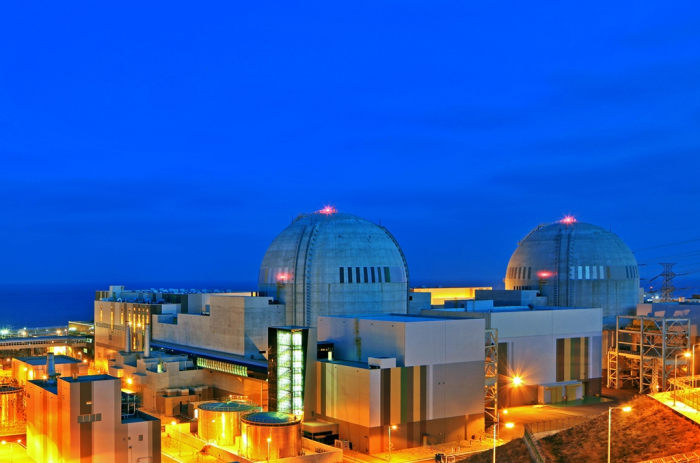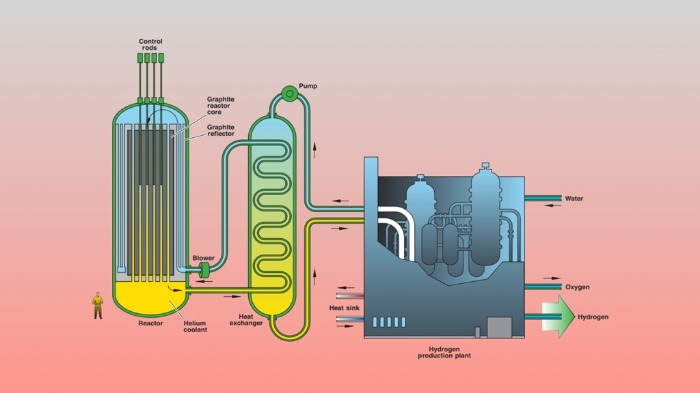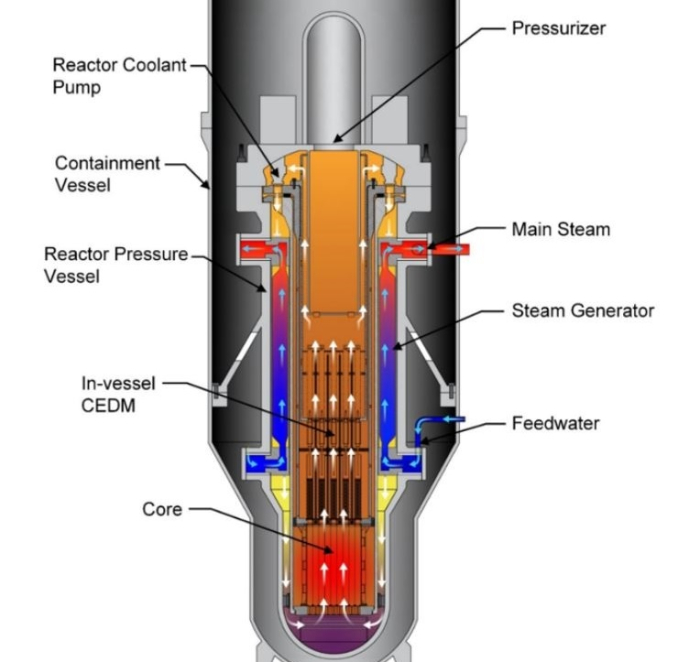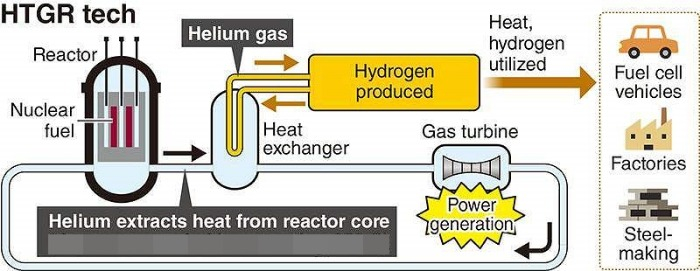Energy
South Korea to develop gas-cooled reactor with POSCO, SK, Daewoo
The KAERI and five domestic companies will spend $32 million to develop a next-generation HTGR by 2027
By Jul 31, 2024 (Gmt+09:00)
2
Min read
Most Read
Samsung steps up AR race with advanced microdisplay for smart glasses


When in S. Korea, it’s a ritual: Foreigners make stops at CU, GS25, 7-Eleven


Maybe Happy Ending: A robot love story that rewrote Broadway playbook


NPS yet to schedule external manager selection; PE firms’ fundraising woes deepen


US auto parts tariffs take effect; Korea avoids heavy hit



South Korea has embarked on a 44.5 billion won ($32.3 million) project to jointly develop an advanced gas-cooled nuclear reactor with related domestic companies as part of its initiative to achieve carbon neutrality by 2050.
The Ministry of Science and ICT said on Wednesday the state-run Korea Atomic Energy Research Institute (KAERI) and five companies have begun developing a high-temperature gas-cooled reactor (HTGR).
For the project, the government will spend 25.5 billion won while the five companies will together contribute the remaining 20 billion won.
Under the joint project, the KAERI will design the nuclear reactor while the five firms – POSCO E&C Co., Daewoo Engineering & Construction Co. (Daewoo E&C), Lotte Chemical Corp., SK Ecoplant Co. and Smart Power Co. – will design and build the HTGR power plant.
The partners aim to develop an advanced HTGR by 2027.

An HTGR is a type of gas-cooled reactor that uses uranium fuel and graphite moderation to create heat at temperatures of 750 to 950 degrees Celsius.
The high operating temperatures of HTGR reactors enable industrial applications such as process heat or hydrogen production via a process called a thermochemical sulfur-iodine cycle.
Unlike existing reactors that use water as a coolant, HTGRs use helium coolant, which enables the use of ceramic triple-coated nuclear fuel to be safer.
The ministry said POSCO E&C is expected to use the HGTR technology in steel-making. SK Ecoplant will likely use it to commercialize high-temperature water electrolysis hydrogen production and Lotte Chemical is expected to apply the technology to its petrochemical business, it said.
In mid-July, POSCO E&C and the KAERI signed an initial agreement to jointly work for the development of a next-generation reactor.

DECARBONIZATION
In line with a global initiative to achieve carbon neutrality across industries by 2050, the Korean government is pushing domestic companies to meet low-carbon emission standards, urging them to use nuclear power as an interim alternative to fossil fuels.
The science ministry expects the development of high-temperature gas reactors to considerably replace fossil fuel use in the industrial sector, a segment that accounts for 37.5% of Korea’s greenhouse gas emissions.
Advanced countries, including the US and UK, are working on HTGR projects.
In the US, Dow Chemical Co. is conducting a demonstration project to introduce X-Energy Co.'s high-temperature gas reactor Xe-100.

In the UK, the National Nuclear Laboratory (NNL) is working with companies to develop an HTGR.
China is already using the technology for power generation and district heating in Weihai City.
“We will provide a roadmap for Korea’s next-generation nuclear reactors at the right time to assist domestic firms in their R&D efforts. The government is also actively working on the K-ARDP, or a large-scale Korean-type next-generation nuclear reactor technology development project,” said Lee Chang-seon, the director of the ministry’s Public Convergence Research Policy Bureau.
Write to Kyoung-Ju Kang at qurasoha@hankyung.com
In-Soo Nam edited this article.
More to Read
-

-
 Business & PoliticsSouth Korea to build 3 nuclear plants, 1 SMR under new energy policy
Business & PoliticsSouth Korea to build 3 nuclear plants, 1 SMR under new energy policyMay 31, 2024 (Gmt+09:00)
3 Min read -

-
 EnergyDoosan, DL consortium to invest $130 mn in X-Energy for SMR project
EnergyDoosan, DL consortium to invest $130 mn in X-Energy for SMR projectDec 12, 2022 (Gmt+09:00)
2 Min read -
 Carbon neutralityHyundai Heavy to invest $30 million in TerraPower for SMR business
Carbon neutralityHyundai Heavy to invest $30 million in TerraPower for SMR businessNov 04, 2022 (Gmt+09:00)
2 Min read
Comment 0
LOG IN


